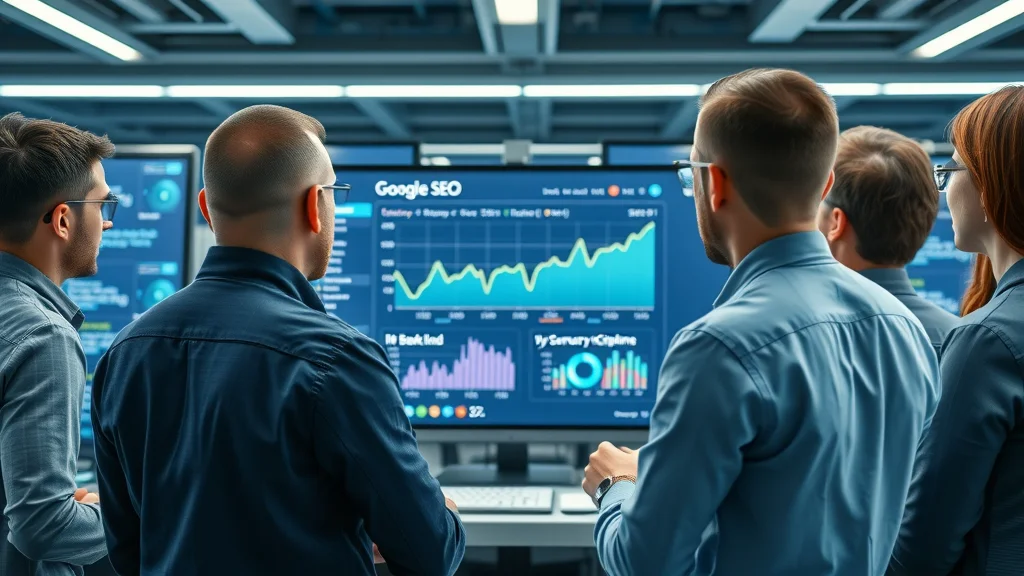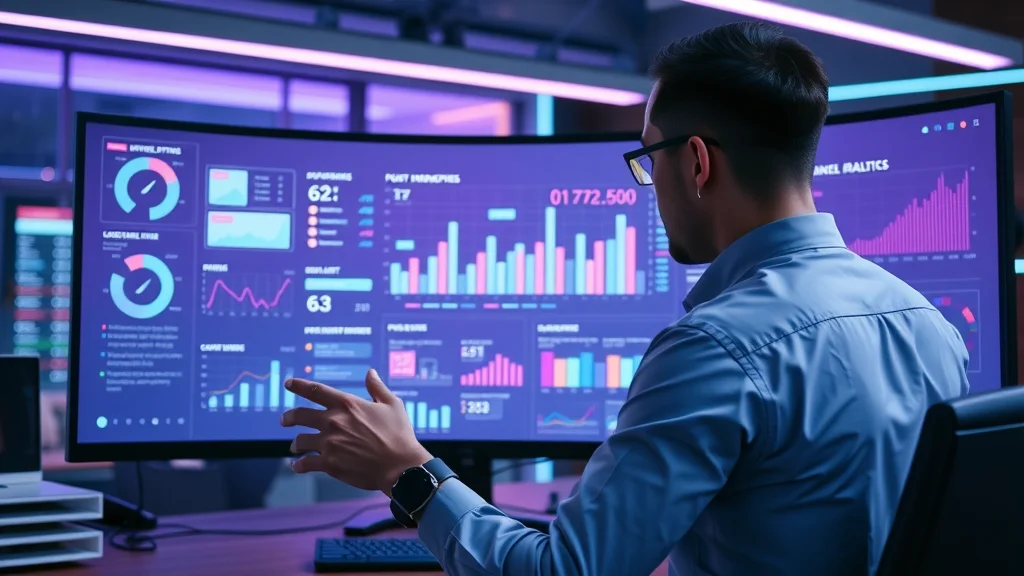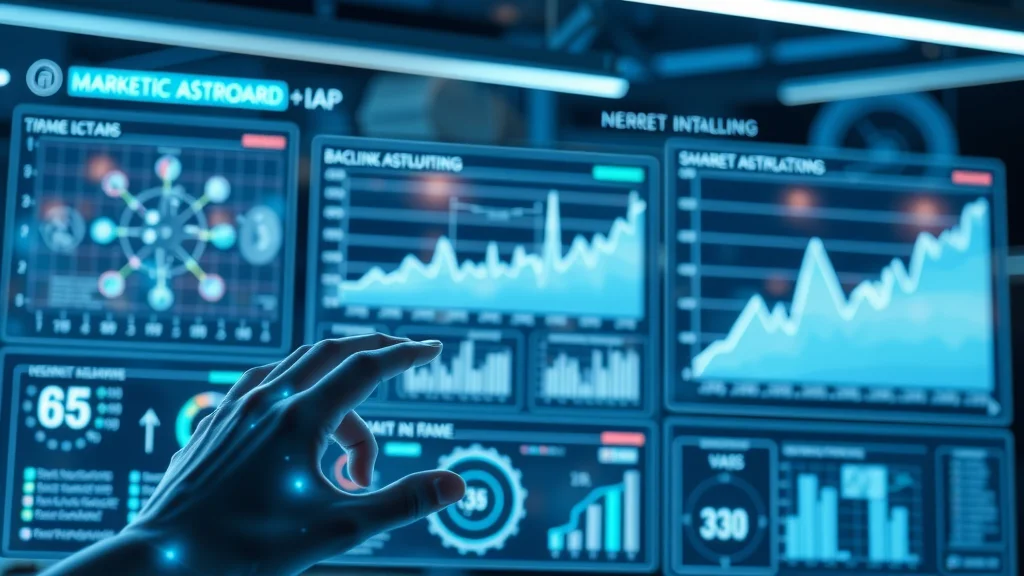Did you know that over 70% of businesses report a substantial leap in their search engine rankings primarily from effective off-page SEO—more so than any other strategy? If you’re focused solely on on-page tweaks, you’re missing the hidden lever that propels websites to the top of search results. Off-page SEO remains the unrivaled champion of link growth and organic visibility, and in 2025, it’s more crucial—and more nuanced—than ever before.

Startling Facts: Why Off-Page SEO Still Dominates in the 2025 SEO Strategy
“According to recent studies, over 70% of businesses see a significant boost in search engine rankings from effective off-page SEO, more than any other optimization tactic.”
Search engines have evolved, but one thing hasn’t changed: off-page SEO is still a critical component of a winning SEO strategy in 2025. Recent updates in Google’s algorithms continuously emphasize signals from outside your website—like backlinks and brand mentions—proving that even as on-page SEO advances, it’s the external vote of confidence that secures dominant rankings.
With consumers and algorithms alike valuing credibility, trust, and authority, brands focusing on high-quality backlinks, strategic digital PR, and brand amplification consistently outperform those stuck in an on-page-only mindset. If you want to move the needle in search engine ranking, a sophisticated off-page SEO approach is your ticket. Let’s break down what makes off-page SEO so irreplaceable and how you can harness its potential—even as algorithms change.
What You'll Learn About Off-Page SEO and Link Building
- The essential differences between on-page SEO and off-page SEO
- How off-page SEO impacts search engine rankings and domain authority
- Effective off-page SEO techniques for quality backlink acquisition
- Expert strategies for leveraging social media, digital PR, and guest posting
- The latest methods for earning brand mentions and citations

Off-Page SEO Explained: Key Concepts Every Marketer Needs to Know
What is Off-Page SEO? Understanding the Foundations
Off-page SEO encompasses all optimization efforts that extend beyond your website’s own pages. Unlike on-page SEO, which focuses on perfecting content, HTML elements, and structure within your site, off-page SEO seeks to boost your website’s reputation, authority, and trustworthiness across the web. Think of off-page SEO as your site’s popularity contest—every quality backlink, brand mention, and positive review is a vote that search engines like Google tally to measure your credibility.
Building a powerful off-page SEO strategy involves link building (acquiring quality backlinks from respected and relevant sites), encouraging brand mentions, cultivating authority through digital PR and guest posting, and driving engagement on social media channels. In today’s landscape, even activities like influencer partnerships, online PR, and strategic content marketing fall squarely into off-page SEO’s domain. Together, these activities send strong signals to search engines that your website deserves a top spot in search results.
The Difference Between On-Page SEO and Off-Page SEO
It’s essential to grasp how on-page and off-page SEO complement each other. While both are crucial to a holistic SEO strategy, they serve different purposes and deploy different tactics. On-page SEO focuses on optimizing what is directly under your control—your content quality, site structure, technical elements, and user experience. Off-page SEO, by contrast, involves activities that influence your website’s reputation and authority, most of which occur outside your domain.
For instance, optimizing your titles and schema is on-page SEO. Earning brand mentions or securing a guest post on a top industry blog? That’s off-page SEO at work. The two disciplines are interconnected—solid on-page SEO creates content and resources worth linking to, while smart off-page SEO amplifies your reach and boosts trust factors.
| Aspect | On-Page SEO | Off-Page SEO |
|---|---|---|
| Definition | Optimization done within your site | Optimization activities outside your site |
| Main Focus | Content, HTML, site structure | Backlinks, mentions, authority |
| Key Elements | Meta tags, content, UX | Link building, digital PR, social signals |
Why Off-Page SEO Is a Ranking Factor in Modern Search Engine Strategies

How Search Engine Rankings Rely on Quality Backlinks and Brand Mentions
Search engines like Google use backlinks and brand mentions to evaluate a site’s authority. Not all backlinks carry equal weight—a quality backlink from a high-authority, relevant site serves as a strong endorsement for your content. Similarly, mentions of your brand—even unlinked—can positively influence your perceived authority. Together, these off-page signals act as votes of confidence that search engines consider direct ranking factors.
Recent algorithm updates have made it clear: engine rankings depend more on a diverse and natural backlink profile, robust brand recognition, and trustworthy third-party citations. Sites that attract authentic, editorially-given links from digital PR, guest posting, and meaningful collaborations consistently outperform those that rely on outdated, spammy tactics. With so many ranking factors shifting, off-page SEO’s dominance in modern SEO strategy is undeniable.
Domain Authority and Its Impact on Engine Ranking
Domain authority (DA)—a metric devised by Moz but echoed in various forms across the SEO industry—reflects the likelihood of a website ranking highly in search results, based largely on off-page signals like backlinks. Think of it as your website’s reputation score on the open web. The higher your domain authority, the greater your potential for search engine ranking success.
“Think of domain authority as your website's reputation score — the higher it is due to quality off-page SEO, the easier it is to rank.”
Effective off-page SEO tactics directly improve your DA by attracting authoritative links and positive brand mentions. This, in turn, can elevate your pages above competitors, particularly when all other on-page factors are equal. Sites with high domain authority often enjoy faster indexing, higher trust from search engines, and better performance in competitive niches.
Recent Google Algorithm Changes and Their Effect on Off-Page SEO
In the past two years, Google algorithm shifts have put an even greater focus on genuine authority signals. Thin content and manipulative backlink practices are penalized more aggressively, while editorial links, digital PR coverage, and relevant mentions move the needle most dramatically. These changes underscore the importance of a holistic, quality-first off-page seo approach.
Today, Google’s systems are better at assessing context around links and mentions. They can distinguish guest posts that add value from those that are purely manipulative, and they reward brand signals that demonstrate real-world popularity. For SEO-focused professionals, this means that staying ahead of algorithm updates requires an adaptive, ethical, and relationship-driven off-page SEO strategy—one that prizes value, not just volume.

Crafting a Winning Off-Page SEO Strategy for 2025
Planning Your Off-Page SEO: Setting Goals and Benchmarks
Crafting an effective off-page SEO plan starts with clarity: What do you want to achieve, and how will you measure success? Define your SEO strategy goals, such as improving domain authority, increasing referral traffic, or earning brand mentions in targeted publications. Then, establish benchmarks—baseline backlink counts, current DA, and your existing network of brand mentions.
Set SMART objectives like gaining 50 new quality backlinks from industry sites within six months or doubling the number of unlinked brand mentions tracked. Having these benchmarks ensures that your off-page seo efforts stay focused, measurable, and aligned with overall marketing goals. Remember: just chasing after the highest number of links isn’t enough—aim for links that move the needle in authority, relevance, and traffic.
Tracking Off-Page SEO Progress with the Right KPIs
Monitoring tangible progress is crucial for continuous improvement. The most valuable KPIs for off-page SEO include the number of quality backlinks acquired, total linking domains, brand mentions across the web, and changes in domain authority. Track the source and relevance of incoming links—links from respected industry sources or popular digital PR campaigns can be far more impactful than a stream of unrelated blogs or low-authority guest posts.
Tools like Ahrefs, Moz, and SEMrush can automate much of this KPI tracking. Also, monitor referral traffic and search engine ranking shifts for your target keywords—these provide clear feedback loops that inform your next strategic moves. Regular analysis reveals what’s working, what’s stalling, and where agile adjustments are needed.
Common Pitfalls in Off-Page SEO Strategies and How to Avoid Them
Many brands unknowingly undermine their own off-page efforts by focusing on quantity over quality backlinks, neglecting local SEO citation building, or ignoring the importance of consistent social media and online PR. Over-relying on exact-match anchor text or participating in black-hat link schemes can trigger algorithm penalties that are difficult to recover from.
To avoid these pitfalls, prioritize building authentic relationships in your industry, create truly valuable content, and approach link building with editorial integrity. Don’t forget to monitor local SEO, nurture a presence on top social media platforms, and seek out strategic brand mention opportunities beyond just websites—think podcasts, webinars, and impactful influencer collaborations.
Link Building for Off-Page SEO: Methods That Work

Quality Backlinks: The Gold Standard for Off-Page SEO
Quality backlinks remain the foundation of any effective off-page SEO strategy. These aren’t just any inbound links—they’re links from high-authority, niche-relevant websites that signal to search engines you’re a trusted player in your field. Earning such links takes effort: original research, expert guest posting, and digital PR pieces that genuinely add value are magnets for authoritative backlinks.
Strategies to secure quality backlinks in 2025 hinge on relationship building and organic outreach. When respected sources cite your website, you’re gaining not just link equity but also real trust—both in the eyes of users and search engines. Resist the temptation to buy links or swap them with unrelated sites; these shortcuts rarely deliver—and can damage your domain authority in the long run.
Broken Link Building: A Smart Approach for Off-Page SEO
Broken link building is one of the most practical, white-hat methods to earn backlinks while providing real value to other publishers. The process is straightforward: find authoritative sites in your niche with broken external links, reach out to their webmasters with your relevant—often improved—replacement content, and secure a link from a page that already enjoys credibility and search engine trust.
This strategy demonstrates your helpfulness and expertise, gives publishers a solution to a problem, and builds win-win relationships that could lead to further off-page SEO opportunities down the line. Over time, consistent broken link building can yield a diverse, natural backlink profile that steadily boosts your engine rankings and authority.
- Identify broken links on authoritative sites
- Reach out to webmasters with relevant content
- Earn backlinks to your pages
Guest Posting and Digital PR: Off-Page SEO for Thought Leadership and Links
Guest posting and digital PR are time-tested methods for earning high-quality links and boosting your brand profile. By contributing expert content to top industry blogs or news outlets, you gain editorial backlinks while positioning your brand as a thought leader. Well-placed guest posts attract not only links but also an audience, sparking engagement—often across social media—and amplifying your SEO effort.
Digital PR campaigns, meanwhile, can secure coverage in major publications, earning both linked citations and organic, unlinked brand mentions. These campaigns may involve newsworthy studies, PR stunts, or impactful expert commentary distributed through industry connections. The more memorable and trustworthy your story, the higher your chances of landing coveted links and recognition.
Earning Brand Mentions and Citations for Off-Page SEO
Brand mentions act as a trust signal, even when not hyperlinked. Earning consistent references—across articles, podcasts, reviews, and social channels—tells search engines your brand is authoritative and relevant. Proactively engaging with influencers, seeking out media features, and monitoring for unlinked brand mentions can all contribute to steady off-page SEO growth.
Citations, especially in local SEO, reinforce your business’s credibility and improve your likelihood of appearing in local search results. Always ensure your NAP (Name, Address, Phone number) is consistent across listings to maximize local search engine ranking gains.

Case study breakdown: Successful link acquisition campaign through guest posting.
Consider a mid-sized SaaS firm that implemented a calculated guest posting strategy: They identified twenty leading industry blogs, pitched unique, data-driven topics, and secured ten accepted posts—all featuring contextual, followable links back to their resource hub. Within six months, their domain authority jumped by eight points, non-brand organic traffic doubled, and their site saw a 30% uptick in branded search engine ranking for high-intent keywords.
The secret? Prioritizing quality over quantity, aligning content strictly with each audience, and nurturing editor relationships for future guest blog opportunities. This same approach, paired with creative digital PR campaigns, establishes a strong, sustainable off-page SEO foundation for virtually any brand.
Leveraging Social Media for Off-Page SEO and Brand Amplification
Social Media Signals and Search Engine Ranking Correlation
While social signals aren’t direct ranking factors, search engines still use them as indicators of brand popularity and relevance. Highly engaged content on major social media platforms often attracts backlinks, broadens your content’s reach, and boosts your overall online authority. In some cases, viral posts directly result in new quality backlinks and increased brand mentions across the digital landscape.
Search algorithms track patterns: when content widely shared on social media also garners references on blogs, news outlets, and forums, it’s a clear indication the brand resonates with real audiences. That resonance, in turn, supports long-term off-page SEO goals—especially for emerging brands seeking to punch above their weight in competitive niches.

Best Social Media Channels for Off-Page SEO Impact
- YouTube
Each platform serves a distinct role in strengthening off-page SEO signals. LinkedIn and Twitter often drive industry-relevant backlinks and thought leadership, while Facebook and Instagram amplify consumer-facing brand awareness and reviews. YouTube, with its massive search presence, can funnel new referral traffic and create lasting video backlinks.
Strategies to Increase Social Signals for Off-Page SEO
To leverage social media for off-page SEO, focus on creating share-worthy content, actively networking with industry influencers, and running campaigns that encourage user participation and brand advocacy. Collaborate with content creators for authentic product endorsements, launch creative contests, and use branded hashtags to spur engagement.
Integrate social share buttons into your content, respond promptly to comments or messages, and participate in topical community discussions. These efforts—all part of a thoughtful SEO strategy—help transform passive followers into vocal brand ambassadors, leading to organic link acquisition, positive reviews, and potent social signals that search engines trust.
Digital PR, Influencer Outreach & Content Marketing for Off-Page SEO
Using Digital PR for Building Authority-Driven Off-Page SEO
Digital PR involves engineering newsworthy stories and expert commentary for coverage in authoritative industry publications. This approach not only drives linked citations from credible media outlets but also raises your overall brand profile—critical elements for off-page SEO. Well-executed digital PR transforms one-time mentions into ongoing partnerships and recurring exposure, boosting both trust and search engine impact.
Craft press releases around data, original research, or timely industry insights, and strategically pitch your stories to journalists, editors, and bloggers. Tracking and amplifying these placements can multiply your reach and secure top-tier backlinks from otherwise hard-to-access websites.
Influencer Marketing: Powering Off-Page SEO through Niche Advocates
Collaborating with industry influencers elevates your content’s credibility and broadens its exposure—directly feeding your off-page SEO engine. Influencers often have domains with robust authority, and when they share your content, review your products, or reference your brand, you benefit from authoritative links and organic brand mentions.
Whether through guest post swaps, joint webinars, or influencer-driven product launches, these partnerships deliver powerful off-page signals. Choose influencers whose audience aligns with your target keywords and industry vertical; personalized and value-driven approaches yield the most fruitful—a lesson that applies to broader link building and digital PR as well.

Content Marketing That Attracts Quality Backlinks and Brand Mentions
Content marketing is the fuel powering sustainable off-page SEO. Exceptional blog articles, infographics, interactive tools, and original research are inherently “linkable assets”—content so valuable that other brands and publishers can’t help but reference it. These pieces not only catch the eye of journalists and bloggers, but they also serve as cornerstone resources for digital PR, guest posting, and social sharing campaigns.
Strategic content marketing means going beyond generic blog posts; it’s about in-depth how-to guides, data studies, visual explainers, or unique thought leadership that sparks conversation and authority-building citations. The more audience-driven and innovative your content, the more backlinks and mentions it naturally accrues, strengthening your entire off-page SEO effort.
Local SEO and Off-Page SEO: Maximizing Google Business & Citations
Optimizing Google Business Profile for Off-Page SEO
For local SEO, your Google Business Profile acts as the digital face of your company in local search results. Complete every field with up-to-date information—hours, services, images, and posts—and encourage reviews from happy customers. Consistent positive engagement on your Google Business listing signals both trustworthiness and relevance to Google, directly influencing your rank in local and mobile search results.
Actively responding to reviews, posting updates, and ensuring NAP data accuracy solidify your footprint while indirectly sparking off-page SEO benefits. Search engines value these signals, knowing they reflect real-world trust and consumer satisfaction—key ranking factors for any local business.
Building Local Citations and Reviews to Impact Local Engine Rankings
Local citations—directory listings and review platforms that reference your business name, address, and phone—help reinforce trust for both users and search engines. Securing consistent, accurate citations across platforms like Yelp, TripAdvisor, local chambers, and sector directories establishes your local authority and can even result in powerful backlinks.
Proactively encourage reviews from loyal customers and follow up with timely, genuine responses. This not only cultivates a positive public perception but also increases unlinked and linked brand mentions that cumulatively improve your local engine rankings and visibility.

How off-page SEO boosts local search success: Real-world examples.
A local coffee shop optimized its Google Business profile and earned consistent five-star reviews from loyal patrons. Through targeted digital PR—such as sponsoring community events—the business was covered in multiple local blogs and newsletters, each coverage carrying a contextual link and a mention. Within a year, not only did organic foot traffic grow, but the coffee shop also ranked in Google’s highly coveted local three-pack, outpacing even larger franchise competitors.
This real-life outcome showcases that off-page SEO, when tailored to local search and supported by legitimate citations and positive reviews, leads to measurable business growth and local search engine ranking improvements.
Advanced Off-Page SEO Tactics: Beyond Standard Link Building
Resource Page Link Building for Off-Page SEO
Gaining backlinks from established resource pages is a highly effective yet often overlooked off-page SEO technique. Identify relevant industry pages—university resources, government guides, or niche directories—that compile valuable links for their visitors. Reach out with your best content, positioning it as a valuable addition that fills gaps or updates outdated information.
Resource page links are especially prized because they signal editorial endorsement and long-term utility. They not only pass SEO value but also position your brand as a go-to resource, attracting recurring referral traffic and boosting search engine ranking authority.
HARO & Journalist Outreach to Secure Off-Page SEO Wins
Using “Help A Reporter Out” (HARO) and targeted journalist outreach facilitates legitimate, high-value link placements. By responding to journalists’ queries with expert insights and data, you can earn backlinks from leading news sites and industry magazines—sources that far outweigh standard guest blogging in authority.
Building relationships with reporters and editors feeds your off-page SEO efforts by securing mentions in reference-rich articles, quote roundups, and niche “best of” lists. Over time, this approach establishes you as a reliable expert, increasing the chances of landing future features and mentions even outside formal outreach campaigns.
Data-Driven Content & Interactive Assets for Viral Off-Page SEO Campaigns
Viral, data-driven content combined with interactive tools (like calculators, quizzes, or live data visualizations) has immense link-building power. Publishers, journalists, and industry influencers love to link to innovative assets that help them inform, engage, or solve problems for their audiences. When these assets gain traction, they generate not only backlinks but also widespread brand mentions and positive PR.
To maximize the viral effect, promote your interactive assets across social media, digital PR campaigns, influencer partnerships, and email newsletters. This multidimensional push ensures the content travels far beyond your own site—generating exponential off-page SEO dividends.

Measuring the Impact of Off-Page SEO on Search Engine Rankings
Trusted Tools for Monitoring Backlinks, Brand Mentions, and Off-Page Signals
Effective off-page SEO management requires robust monitoring tools. Platforms such as Ahrefs, SEMrush, Moz, and Google Search Console provide deep insights into backlink profiles, anchor text distributions, lost and new links, domain authority shifts, and unlinked or unbranded mentions.
Brand monitoring tools (like Mention, Brand24, or Google Alerts) help track online PR efforts and social mentions, ensuring you capture every potential opportunity for strengthening your digital footprint. By staying alert to changes, SEOs can react quickly to mitigate losses (like disappearing links) or capitalize on new trends and mentions as they happen.
Interpreting Off-Page SEO Metrics to Inform SEO Strategy
Simply gathering data isn’t enough—you must interpret it effectively. Focus on metrics that drive actionable decisions: total number of unique linking domains (not just links), sustained growth in domain authority, volume of brand mentions, and contextually-relevant referral traffic. Avoid fixating solely on raw link quantity; today’s search engines value relevance, authority, and editorial endorsement far more than sheer numbers.
| Metric | Explanation |
|---|---|
| Total Linking Domains | Number of unique external sites linking to you |
| Domain Authority | Moz’s predictor of site ranking ability |
| Brand Mentions | References of your brand across the web |
“What can be measured can be improved: Regularly checking your off-page SEO metrics leads to sustained growth.”
Common Off-Page SEO Mistakes to Avoid in 2025
- Focusing on quantity over quality backlinks
- Neglecting local SEO citation building
- Forgetting social media signals
- Ignoring digital PR opportunities
The most common mistakes in off-page SEO can undo months of hard work and, in extreme cases, prompt algorithmic penalties. Always treat link building as a trust-building exercise—never compromise quality or authenticity for temporary volume gains.
The Future of Off-Page SEO: Evolving Trends in Link Building & Brand Signals
AI-Driven Off-Page SEO and Automated Link Analysis
Artificial intelligence is rapidly reshaping the way marketers approach off-page SEO. AI-powered link analysis tools can identify toxic links, predict the value of potential backlink sources, and automate parts of outreach with actionable recommendations. These technologies streamline the process, allowing SEOs to focus on relationship-building and high-level strategy, while ensuring continuous compliance with evolving ranking factors.

How AI is changing the future of off-page SEO and link building.
AI not only automates tedious link tracking but also enhances targeting with personalized outreach campaigns, predicts successful link acquisition prospects, and surfaces valuable unlinked brand mentions. As algorithms grow more sophisticated, AI will help SEOs spot trends before the competition, develop more resilient link-building strategies, and respond to negative SEO threats preemptively.
Adopting AI-driven tactics gives you a clear edge in sustaining growth and continually refining your off-page SEO as the digital landscape evolves.
Predictions: What to Expect in Off-Page SEO Evolution
“Off-page SEO in 2025 is more dynamic and relationship-focused than ever — stay adaptable and data-driven to succeed.”
People Also Ask: Off-Page SEO FAQs
What is an off-page SEO?
Off-page SEO refers to all SEO activities that occur outside of your website, aimed at improving your site’s visibility and authority in search engine rankings—primarily through building quality backlinks, boosting brand mentions, leveraging social media, and engaging in digital PR.
What is the difference between onpage SEO and off-page SEO?
On-page SEO involves optimizing elements on your website (content, meta tags, structure) for search engines, while off-page SEO focuses on gaining external signals like high-quality backlinks, social shares, and brand mentions to increase site authority and rankings.
How do you improve your off-page SEO?
Improve your off-page SEO by earning quality backlinks from authoritative websites, building relationships for brand mentions, leveraging social media for signal amplification, implementing digital PR, and regularly measuring your progress with top SEO tools.
What are the 4 types of SEO?
The four types of SEO are: on-page SEO, off-page SEO, technical SEO, and local SEO—each targeting specific optimization areas for better search engine performance.
Key Takeaways for Effective Off-Page SEO in 2025
- Off-page SEO is vital for building authority and search engine rankings
- Quality backlinks and brand signals outweigh quantity
- Integrate social media and content marketing for amplifying off-page signals
- Continually measure and refine your off-page SEO strategy to keep up with Google’s algorithm updates
Get Started Today: Transform Your SEO Strategy with Powerful Off-Page SEO Techniques
Off-page SEO is the powerhouse behind lasting search engine ranking success. Prioritize quality, ethics, and continual learning, and you’ll secure your digital future in an ever-evolving landscape. Start implementing these strategies now and watch your authority—and your rankings—soar in 2025 and beyond.
 Add Row
Add Row  Add
Add 




Write A Comment